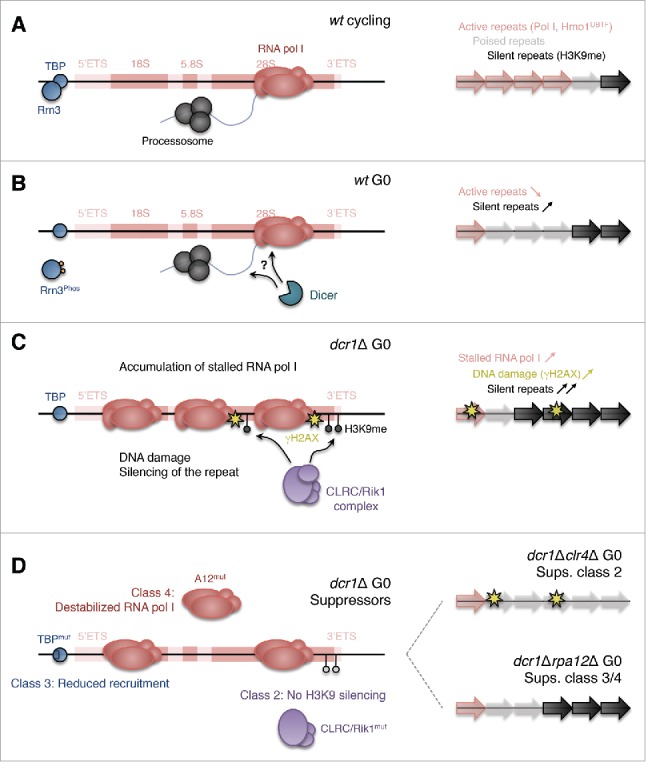Figure 2.

Model for the novel essential role for Dicer in RNA polymerase I release in G0. (A) In wild-type cycling cells, RNA pol I transcribes the rDNA repeats. (B) Wild-type G0 cells lower the recruitment of RNA pol I to rDNA, in part via phosphorylation of the Rrn3 initiation factor, shifting the ratio of active vs. silent rDNA repeats. Dicer contributes to RNA pol I release, although it is still unknown whether this occurs directly at the level of rRNA or via RNA pol I itself. (C) Dicer mutants in G0 are defective in RNA pol I release, resulting in accumulation of stalled RNA pol I, DNA damage, and the recruitment of the silencing CLRC/Rik1 complex at the repeat, causing a hyper-silencing of rDNA repeats via H3K9 methylation. (D) The Dicer defect is suppressed by mutants in the H3K9 methylation pathway (class 2: such as dcr1Δclr4Δ), by reducing RNA pol I transcription initiation (class 3: such as dcr1Δtbp1-D156Y), or by destabilizing RNA pol I itself (class 4: such as dcr1Δrpa12Δ).80 (Note: class 1 suppressors are not represented, and concern chromosomal segregation during G0-entry).
